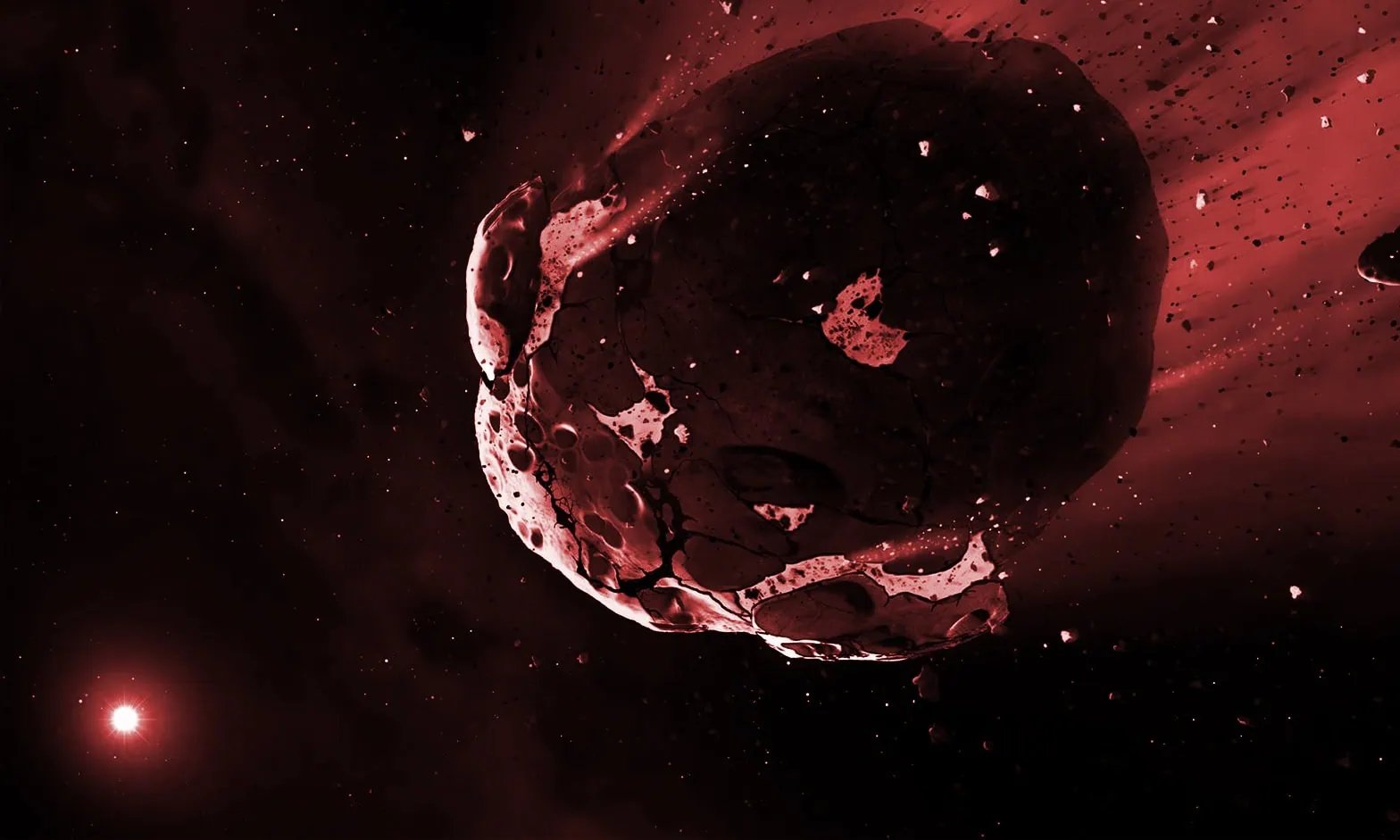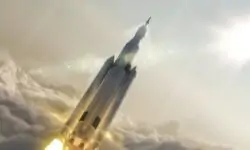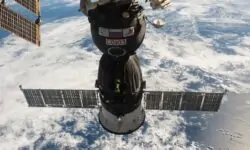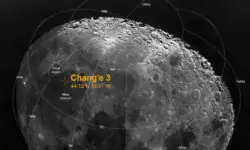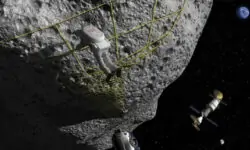Russia, India, Japan, China, the United Arab Emirates, the U.S., the European Space agency, etc. are all sending robots on the Moon or on Mars. On 26 September 2022, the U.S. NASA purposefully projected a spacecraft on asteroid Dimorphos. Such was the precision and the force of the impact that it opened a crater in the middle of the asteroid, while altering its trajectory (Keith Cooper, “NASA’s DART mission hammered asteroid Dimorphos into a new shape. Here is how“, Space.com, March 21, 2024).
Those countries and international organizations are all developing ways and means to materially intervene on space bodies.
Resources, resources
Building upon Helene Lavoix’s seminal article, which identified the issue first, mining rare earths or common minerals is critical to every aspect of contemporary civilization (Hélène Lavoix, “Beyond Fear of near-Earth objects : Mining resources from space ?“, The Red Team Analysis Society, February 18, 2013).
Indeed, those minerals are essential to the material foundation of the current worldwide energy transition including the related nuclear renaissance, to the exponential development of AI and its militarization and of the digital economy, to the development of urban life, and to the rapid development of Asian countries ( “EXECUTIVE SUMMARY – In the transition to clean energy, critical minerals bring new challenges to energy security“, International Energy Agency / IEA, March 2022).
- Trump Geopolitics – 1: Trump as the AI Power President

- Uranium for the U.S. Nuclear Renaissance – 2: Towards a global geopolitical race
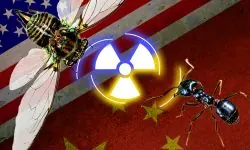
- The New Space Race (1) – The BRICS and Space Mining
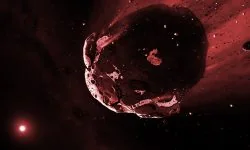
- Uranium for the U.S. Nuclear Renaissance – 1: Meeting Unprecedented Requirements

- Fifth Year of Advanced Training in Early Warning Systems & Indicators – ESFSI of Tunisia

- Towards a U.S. Nuclear Renaissance?

- AI at War (3) – Hyperwar in the Middle east

- AI at War (2) – Preparing for the US-China War?

Thus, it is not surprising that mines, ore deposits and geological prospects are, one way or another, increasingly important in current conflicts, wars and geopolitical realignments.
For example, one can note that several african, asian and south-american countries are members of the Chinese Belt&Road, knowing that the purpose of this Chinese grand strategy is to bring resources in China (Jean-Michel Valantin, “China and the New Silk Road: From Oil Wells to the Moon… and Beyond “, The Red Team Analysis, 6 July, 2015).
For instance, Niger adheres to the Chinese Belt & Road initiative and China continues operating the Azelik-Abokurum uranium deposit in the country, while expelling the french military forces are expelled and operations terminated with French nuclear Orano and Canadian GoviEx (see Hélène Lavoix, Niger: a New Severe Threat for the Future of France’s Nuclear Energy?, The Red Team Analysis Society, 21 June 24; The World of Uranium 1 and World of Uranium 2; RTI, “Niger embraces Russia for uranium production leaving France out in the cold” 13 November 2024).
Space mining vs “the limits to growth”
However, the relentlessly mounting pressure on geological resources puts the current global development dynamic on a collision course with the geological “limits to growth” (Gaya Herrington, “Update to Limits to Growth, Comparing the World 3 model to empirical data“, KPMG LLP, Stanford University,2020).
In this context of progressively depleting mineral resources, space bodies are more and more attractive, because they are rich with “high concentrations of rare metals—platinum and gold for electronics, nickel and cobalt for catalyst and fuel-cell technology, and, of course, iron” (Bertrand Dano in Robert C. Jones Jr, “The New space race: mining for minerals on asteroids“, News@TheU, Ubniversity of Miami,, 10/09/2024)..
Reaching those deposits, mining them and bringing them back to Earth necessitates to reinforce robotics, space technology dimensions of artificial intelligence (Jean-Michel Valantin, “Space mining, Artificial intelligence and transition“, The Red Team Analysis Society, March 19, 2018).
Indeed, lunar and asteroid landers and robotic miners will have to be strongly autonomous. Thus, the race to space mining entails immense technological challenges and financial hurdles. And yet, it is taking place.
If we adopt a geopolitical look, it appears that the race for space mining is happening between two large “geopolitical partnerships”, i.e “the West” on the one hand and “the BRICS” on the other.
The original BRICS are the group composed of Brazil, India, Russia, China and South Africa.
In 2023, the group integrated Egypt, Iran, Ethiopia and the United Arab Emirates, while Saudi Arabia is still considering the invitation (Fyodor Lukyanov et al., ” The BRICS Summit 2024: an expanding Alternative“, Council on Foreign Affairs and the Council of councils, 7 Novembre, 2024).
BRICS members, as well as the U.S. and the European Union, are developing space mining projects and strategies. Thus, this race projects the current strategic competitions between western countries and BRICS countries in outer space. Hence, the race to space mining becomes the “continuation of geopolitics through space means”.
We are going to study which of the BRICS countries join the space mining race. Then we shall see how this race is intricately linked with the development of artificial intelligence. Then, we shall highlight that this race is also a geopolitical one, and as such a potential preparation for (not so) future realignments.
Space Mining BRICS
Take me to the Moon !
In 2023, the Indian lunar lander Chandraayan 3 touched down near the Moon south pole (Geeta Pandey, “Chandrayaan-3: India makes historic landing near Moon’s south pole”, BBC, 23 August, 2023). In 2024, the Chinese Space Agency landed a new lunar rover, also on the Moon south Pole (Ben Turner, “China rover returns historic samples from far side of the Moon- and they may contain secrets from Earth deep past“, Live Science, 25 June, 2024).
In 2023, the Russian mission failed at the last moment. However, Russia will renew its launch in the coming months ( Guy Faulconbridge, “Russia’s first lunar mission in 47 years smashes into the Moon in failure“, Reuters, 21 August, 2023).
The Moon south pole attracts this new wave of robotic exploration because it may contain water in craters. This lunar region is highly exposed to the sun. Thus, lunar robots may use both sun energy and water in order to build permanent bases (Guy Faulconridge, “Explainer: Moon mining – Why major powers are eyeing a lunar gold rush ?”, Reuters, August 11, 2023. Those landers and robots benefit from the exponential progress of AI machine learning (Ayaan Naha, “How rovers use machine learning to navigate Mars and the Moon?“, Medium, October 12, 2023).
To be or not to be on Mars
As it happens, two U.S. rovers and one robot helicopter, a United Arab Emirates rover and a Chinese rover are already exploring the surface of Mars. Russia, India, the European Union and the U.S. are preparing new Mars missions. If the U.S. and the EU have already launched human beings in space and on the Moon, some of the BRICS – Russia, China and the UAE – are also space faring countries.
China as even built its own space station, while it multiplies space partnerships with Russia. and has sent robots on the Moon. Russia is a historic space faring countries and is reviving its Moon landing program (Jean-Michel Valantin, “The Chine-Russian Robot and space cooperation – China (1), Russia (2), The Red Team Analysis Society, January 22, 2018 and “Race for Moon resources has begun, says Russian Space chief after failed lunar mission“, Reuters, August, 2023).
Russia goes to the Moon
Some of the prominent members of the BRICS, such as Russia, are openly expressing their space mining intent and goals. After the August 2023 Moon landing failure of a Russian space craft, Boris Yusimov, Roskosmos chief declared:
« This is not just about the prestige of the country and the achievement of some geopolitical goals. This is about ensuring defensive capabilities and achieving technological sovereignty … Today it is also of a practical value because, of course, the race for the development of the natural resources of the moon has begun. And in the future, the Moon will become a platform for deep space exploration, an ideal platform. » (“Race for Moon resources has begun, says Russian Space chief after failed lunar mission“, Reuters, August, 2023).
China on the Moon
China, the other main driver of the BRICS with Russia, is also laying plans to mine the Moon and asteroids. Indeed, in 2023, the Chinese government submitted a proposal at the UN working group on the Peaceful uses of outer space. The Chinese document aims at establishing the legality of space resources exploitation, respecting the framework of the 1967 Outer Space Treaty. Thus, China proposes to exploit space resources without national annexations of the Moon or other celestial bodies (Andrew Jones, “China outlines position on use of space resources“, Space News, March 6, 2024.
Meanwhile, in May 2024, the Chinese Space Agency launched the Chang’e 6 mission. At this occasion, a lunar rover took samples of the Moon surface. Those were brought back on Earth on 25 June 2024. This mission precedes the Chang’e 7 and 8 missions that should take place respectively in 2026 and 2028. Those missions will explore the availability of Moon resources as well as the Moon South pole (Andrew Jones, “China Chang’e 7 mission to targer Shackleton crater”, Space News, 30 January, 2024).
They will be instrumental for establishing the technological conditions for a permanent Lunar robotic and inhabited base, around 2030, the International Lunar Research Station (ILRS). This project already involves Russia, as well as numerous other countries. Among them are Venezuela, Belarus, Pakistan, Azerbaijan, South Africa, Egypt, Nicaragua, Thailand, Serbia ad Kazakhstan. Turkey is applying. It is interesting to note that all of these countries are part of the Chinese Belt & Road initiative. As of September 2021, France, Italy, the Netherlands, Germany were also discussing about a possible participation (https://tass.com/science/1343047 and Andrew Jones, “China wants 50 countries involved in its ILRS moon base”, Space News, July 23, 2024, Aedan Yohannan, “China’s space strategy dwarfs U.S ambitions”, The National Interest, March 11, 2024 and Jean-Michel Valantin, “China and the New Silk Road: From Oil Wells to the Moon… and Beyond “, The Red Team Analysis, 6 July, 2015).
The main axis of this cooperation is the construction of the ILSR, officially announced in 2021. Then, in March 2024, the Russian side unveiled the project of building a nuclear power plant, in order to produce enough electricity for the ILSR. This nuclear plant is meant to be built between 2033 and 2035 ( Julianna Suess and Jack Crawford, “Russia and China reaffirm their space partnership”, RUSI, 12 April 2024.
This project is part of the dense space and robotic partnerships that Russia and China are developing. This cooperation deepens since 2017 and the signature of a mammoth deal in space cooperation (Jean-Michel Valantin, “The China-Russian Robot and space cooperation”, ibid ).
In its broad outlines, this deal establishes that China works at modernizing space launchers and spacecraft. Meanwhile, Russia develops robots able to intervene in extreme environments, as outer space. As it happens, for both Russia and China, the development of autonomous robots and probes implies the development of AI. Indeed, this technology is instrumental in the production as well as of the utilization of robots( Valantin, ibid).
The UAE and the asteroids
In the meantime, the United Arab Emirates are preparing the 2028 Emirates Mission to Asteroids. The UAE are a space power (Jean-Michel Valantin, “The UAE Grand strategy for the Future – From Earth to Space”, The Red Team Analysis Society, July 4, 2016). Their robotic probe “Hope” explores Mars since 2021. The goal of this mission is to send a probe that will fly by six asteroids in 2034. Then, it will continue, to orbit around a seventh one. Then, a robot is supposed to land on it (Jeff Foust, “UAE outlines plans for asteroid mission“, Space News, June 3, 2023).
The scientific part of this mission involves a partnership with the Laboratory of Atmospheric and Space Physics of the Boulder University, Colorado (Foust, ibid).As it happens, this partnership may be interpreted as the fact that the UAE need to access to certain levels of technology and scientific capabilities that they cannott yet develop..
What is at stake?
Hence, it is important to establish the strategic complexity of what is at stake in space mining.
The leading BRICS countries in space mining are the UAE, Russia and China. If India is now a space faring nation, its space mining ambitions are not established to this day.
Space mining and national power in space
The R&D and the projection of space mining capabilities on the Moon as well as on asteroids ard also a way to project national power in the solar system. Thus, deep space becomes both the extension as well as the support of national power. Considering AI and industrialization development on Earth space mining could turn the solar system into an immense resources system.
The extraction of those resources will be possible through huge national investments. In other terms, space mining spacecrafts and robots will literally “nationalize” deep space and convert it into spheres of influence. However, this situation may generate discrepancy between those new space practices and the 1967 UN Outer Space treaty. The principles of the treaty establish, among other provisions, that “the exploration and use of outer space shall be carried out for the benefit and in the interests of all countries and shall be the province of all mankind;
- outer space shall be free for exploration and use by all States;
- outer space is not subject to national appropriation by claim of sovereignty, by means of use or occupation, or by any other means;…” (United Nations, Office for Outer Space Affairs)
So, the appropriation of resources scattered throughout the solar system by space public or private companies may very well have legal and political repercussions. As a result, the national interests that drive the race for mining may well generate important tensions with and within the UN system at the time of its “spatialization”.
Hyper dominance ?
Finally, space mining could become an industrial way to practice dominance from a new definition of (very) “high ground”. Indeed, since 1945 and the start of the race for missiles and for space access, the Earth orbit and the Moon have been eyed by space faring countries as the new place for strategic dominance (William Burrows, This New Ocean, 1998). Thus, having flotillas of spacecrafts and robots in space during the next decade could become a new race for both raw elements and “raw power”.
As was the case, for example, with the interactions between radar, rockets and satellite technologies, that became mutual technological bricks from 1940 to today, space mining is rapidly laying the ground for the new scale of development of space power. This new sequence may very well extend from the Earth towards the asteroid belt ( Neil Sheehan, A Fiery Peace in a Cold War, Bernard Schriever and the ultimate weapon, Random House, 2009).
As it happens, the BRICS momentum to space mining is a race, because it is also a competition with western countries. So, we now need to explore what is geopolitically at stake with space mining in the West.

